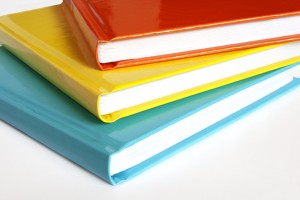What to Think About Before Laminating Your Next Book Project

When your next project requires laminating, what should you keep in mind?
Does your latest book project need to be laminated? If so, you might be a little unsure about what that means. Lamination is a process that protects a printed page by enclosing it beneath two transparent sheets of plastic. It’s similar to sliding a page into a plastic divider sleeve but is much more durable and attractive. When your next project requires laminating, what should you keep in mind?
What’s the Right Thickness?
The thickness of a regular page matters when the book project is about the enter production. Likewise, thickness matters during the laminating process as well. How thick a laminated page is will be measured in mils. Mils are tiny units, to the point where they are nearly indistinguishable. For instance, 1.5 mil equals .0015” thick. If you choose a laminated page that is 1.5 mil, it will affect how thick the final project is.
At 3 mil, the difference might not be that significant, but we all know how necessary precision is when it comes to publishing, binding, or laminating something.
What Finish Do You Prefer?
Another factor to consider before laminating your project is how much sheen you want in the finish. The two main types of finish are called gloss and matte. Gloss gives the finished product a glass-like appearance, which accentuates the color and vibrancy of whatever it is. That said, a gloss finish is useful for book covers, reports, and training documents.
Matte isn’t as shiny. It helps reduce glare from light reflection, making it easier to read. Menus, maps, and interior pages should be given a matte finish.
What Edge Do You Want?
Edges are another crucial design element to consider when you’re laminating your upcoming project. When the side is sealed, that means that more lamination will protect the fringes of your project, book or otherwise. A flush edge, on the other hand, is cut so that it is only as long as the edge of what it is protecting.
What About the Corners?
Once the laminating is almost done, you still have more decisions to make. Ninety-degree angles at the corners can become sharp if the laminated sheet is rigid enough. Thus, sharp corners should be rounded off so that they don’t present a safety risk. Round corners also lend a sleek finished look to the book itself.
Advantage Book Binding Can Help You Create The Printed Book You’ve Always Wanted!
Are you interested in having a bound novel? Are you entering the workforce, interested in a bound portfolio to showcase your work? Advantage Book Binding offers plenty of services and binding types that are perfect for suiting your needs. We also offer specialty binding options for those of you looking for something extra special.
Advantage Book Binding can advise you as to what kind of binding style will work best for your specific project, taking into consideration budget requirements to provide you with the most cost-effective and project-specific solution for you. Please contact us today for more information, and keep up with us on Facebook, Google +, Twitter, and LinkedIn.
